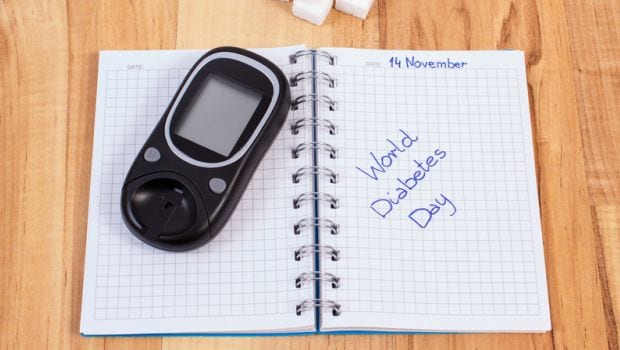 Carbohydrates present in food have a direct impact on your blood sugar levels. Every time you eat, carbohydrates are broken down to glucose molecules which pass into the blood stream from where they enter the cells and are used as fuel for different body functions. The excess glucose is converted into fat in some cells and stored for later use. Insulin, a hormone produced by our pancreas, is the key that opens the cell doors to allow glucose to enter. People who have diabetes are either completely missing this key as in type 1 diabetes, where little or no insulin is produced, or they have a faulty key as in type 2 diabetes where the cells do not respond to the insulin or the body makes less insulin. Both types of diabetes result in blood sugar levels that are higher than they should be unless controlled through medicines and insulin injections.
Carbohydrates present in food have a direct impact on your blood sugar levels. Every time you eat, carbohydrates are broken down to glucose molecules which pass into the blood stream from where they enter the cells and are used as fuel for different body functions. The excess glucose is converted into fat in some cells and stored for later use. Insulin, a hormone produced by our pancreas, is the key that opens the cell doors to allow glucose to enter. People who have diabetes are either completely missing this key as in type 1 diabetes, where little or no insulin is produced, or they have a faulty key as in type 2 diabetes where the cells do not respond to the insulin or the body makes less insulin. Both types of diabetes result in blood sugar levels that are higher than they should be unless controlled through medicines and insulin injections.
Diet is a critical element of control in managing diabetes. People with diabetes must pay attention to how much carbohydrates they eat and how carbohydrates affect blood sugar levels. The glycaemic index (GI) has been created to help you do just that. Based on their composition (starch, sugar and fibre), some carbohydrates are broken down quickly and cause a sharp rise in blood sugar (high GI value), while others are broken down over a longer duration, causing a slower rise in blood sugar levels (low GI value). Knowing the GI helps you compare different carbohydrates and choose what is ideal.

Use the glycaemic index to plan diabetes-friendly meals
Food items with a low or medium GI index are a healthier and better choice while those with a high GI are not recommended. Here are some examples of carbohydrate-containing food items classified on the basis of the GI:
· High GI food items have a GI of 70 and above. Examples are white wheat bread, white rice, instant oat porridge, rice porridge, cornflakes, boiled potato and refined sugar.
· Medium GI food items have a GI of between 56 and 69, such as whole wheat flour, wheat roti, boiled sweet potato and honey.
· Low GI food items have a GI less than 55 and these are lentils, soya beans, chick peas, vegetable soup, boiled carrots, apples, oranges, bananas, yogurt and milk (full fat and skim)
Only carbohydrates are graded through a GI; meat and fats are not included in this. This index is a very effective guide for balancing carbohydrate consumption with the right amounts of protein and good fat for a healthy, diabetes-friendly diet.
How to reduce the glycaemic index of your meal
If you have some foods in your daily meal with a high GI, try to balance it with food that has a lower GI. Here are some suggestions to help you reduce the GI of your meal:
· Replace white rice with brown rice or unprocessed rice
· Give up white bread and eat more chapatti or rotis
· Pick low GI fruits such as apples, oranges and bananas
· Sweet potatoes have a lower GI than potatoes, so use more of these when in season
· Increase your fibre intake to lower the overall GI of a meal

Along with the GI, serving size and the nutrition content must also be considered while planning a meal. For example, the GI of a soft drink is lower than that of an instant oats porridge, but oats contain high fibre and better nutrition compared to soft drinks that contain empty calories. Moreover, how high your blood sugar rises after a meal depends on both, the GI of the food and the amount you eat. Hence, although watermelon has a high GI, if you eat just one serving (i.e. one slice) you will have had a small amount of carbohydrate. There is no one fixed way to plan a healthy meal. Understand and use the GI value of food items you like and want to eat, to fine-tune and create a balance for each meal.










